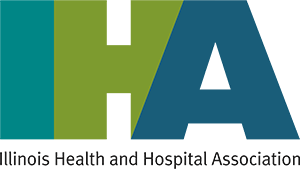Community Health Needs Assessment
Section 501(r) Requirements
As required by the Affordable Care Act, hospitals must conduct a Community Health Needs Assessment (CHNA) every three years and an authorized body of the hospital must adopt an implementation strategy to meet the health needs identified in the CHNA. The IRS final rule for hospitals to maintain federal income tax exemption provides further guidance on the CHNA for hospitals that are new, newly acquired or newly subject to 501(r).
Conducting a CHNA
The final rule requires the solicitation and consideration of input from persons representing the broad interests of the community each time with each CHNA, even if the CHNA builds upon a previously conducted CHNA. The CHNA must include the following:
Community Served: Hospitals have broad flexibility to define the communities they serve or intend to serve, taking into account all relevant facts and circumstances, provided they do not exclude medically underserved, low-income or minority populations.
Assessing Health Needs: A list of examples of significant health needs a hospital may consider in the CHNA is expanded. Hospitals have flexibility to choose how to prioritize the health needs, but must take into account community input both in identifying and prioritizing significant health needs. The CHNA must identify resources potentially available to address significant health needs.
Input from the Community: The CHNA must take into account input from at least one state, local, tribal or regional governmental public health department; members of medically underserved, low-income and minor populations or those representing those populations; and written comments received on the most recently conducted CHNA and implementation strategy. Hospitals that solicited, but could not obtain this input, must document their reasonable efforts to do so in the CHNA. Hospitals may choose to post a draft CHNA for public comment without triggering the start of a hospital’s next three-year CHNA cycle. Hospitals can develop their own system for receiving and tracking written comments from the community.
Documentation of a CHNA: A hospital must document in its CHNA report that the report has been adopted by an authorized body of the hospital and must include the following:
- Definition of the community served and how it was determined;
- Process and methods used to conduct the CHNA;
- How community input was taken into account;
- Prioritized description of the significant health needs identified and how determined;
- Potential resources to address the significant health needs; and
- Evaluation of the impact of any actions taken to address significant health needs from prior CHNAs.
“Process and Methods” Section: This section should describe the data and other information used in the assessment, as well as the methods of collecting and analyzing this data and information, identifying any party with whom the hospital collaborated or contracted with for assistance in conducting the CHNA. The final rule allows hospitals to rely on data collected or created by others and to cite the data sources rather than describe the data collection methods.
Collaboration on CHNA Reports: Hospitals are permitted to collaborate with other organizations, and sections of their respective reports may be substantively the same. Collaborating hospitals that define their communities as the same ones may conduct and issue joint CHNAs, but the rule also allows a hospital to identify a significant health need that is more localized. The rule clarifies that joint CHNA reports must contain all of the same basic information that separate CHNAs must contain. It permits hospitals with different but overlapping communities to collaborate in conducting a CHNA and to include substantively identical portions in their separate CHNA reports if appropriate. This also allows joint and/or substantively identical sections of reports with public health departments.
Widely Available to the Public: Hospitals must post their CHNA reports on a website and make a paper copy available for public inspection upon request without charge for two subsequent CHNA reports.
Implementation Strategies
The implementation strategy is a written plan that describes how the hospital plans to address or not address each significant health need identified in the CHNA. Additional needs identified through other means may be included. Hospitals must take into account comments on previously adopted implementation strategies when conducting subsequent CHNAs. The implementation strategy must be attached to the Form 990 or include the URL of the webpage where it is posted.
Description of Needs Addressed/Not Addressed: The implementation strategy must describe the actions the hospital intends to take, the anticipated impact and an evaluation of the impact of actions taken since the preceding CHNA; identify the programs and resources it plans commit to address the need; and describe any planned collaboration with other organizations to address the need.
Examples of Additional Health Needs: The rule provides examples of additional health needs that could be identified, such as illness prevention, adequate nutrition, and social, behavioral and environmental factors influencing community health. Examples of reasons a hospital may not address an identified need may include resource constraints, lack of expertise, low priority assigned to the need, lack of identified effective interventions, and if the need is being addressed by others.
Joint Implementation Strategies: Joint implementation strategies are allowed if the following conditions are met: clearly identified as applying to the hospital; identify the hospital’s particular role and responsibilities in taking described actions and resources the hospital will provide; and a summary that helps easily locate those portions of joint strategy that pertain to the hospital.
Due Date: Implementation strategies need to be adopted by the authorized body on or before the 15th day of the fifth month after the end of the taxable year (same deadline as Form 990 without extension) in which the hospital finishes conducting the CHNA. This deadline remains even if the hospital receives an extension to file the 990.
Reporting Requirements
Hospitals must provide the following with its annual Form 990: description of how it is addressing the health needs identified for each hospital operated or the reasons if not addressed; audited financial statements; and the amount of excise tax imposed during the taxable year.

